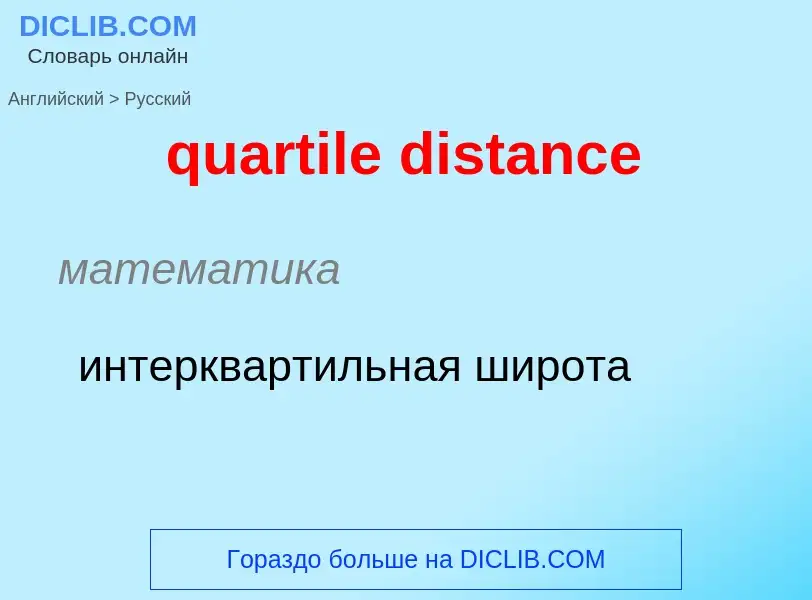Перевод и анализ слов искусственным интеллектом ChatGPT
На этой странице Вы можете получить подробный анализ слова или словосочетания, произведенный с помощью лучшей на сегодняшний день технологии искусственного интеллекта:
- как употребляется слово
- частота употребления
- используется оно чаще в устной или письменной речи
- варианты перевода слова
- примеры употребления (несколько фраз с переводом)
- этимология
quartile distance - перевод на русский
математика
интерквартильная широта
['dist(ə)ns]
общая лексика
расстояние
distance from end of snout to the insertion of the anal fin - антеанальное расстояние
distance from end of snout to the insertion of the dorsal fin - антедорсальное расстояние
flight distance
generalized distance
individual distance
patristic distance
дистанция
дальность
путь прохождения
протяжённость
отдалённость
временной промежуток
период
строительное дело
расстояние, дистанция
нефтегазовая промышленность
интервал
отрезок
существительное
['dist(ə)ns]
общая лексика
расстояние
большое расстояние
отдалённость
отдаление
даль
дистанция огромного размера
несходство
различие
степень отдалённости кровного родства
сдержанность
холодность
почтительное расстояние
промежуток
отрезок
период
перспектива (в живописи)
предфинишная черта (скачки)
дистанция (фехтование)
отдаленность
дальность
сдержанность, холодность (в обращении)
даль, перспектива (в живописи)
промежуток, период (времени)
спорт
дистанция
специальный термин
глубина
авиация
пробег
военное дело
интервал
техника
зазор
музыка
интервал между двумя нотами
Смотрите также
глагол
общая лексика
(from) помещать на (определённом) расстоянии
оставлять далеко позади
владеть перспективой (о художнике)
оставлять далеко позади себя
размещать на равном расстоянии
отдалять
Определение
Википедия
In statistics, a quartile is a type of quantile which divides the number of data points into four parts, or quarters, of more-or-less equal size. The data must be ordered from smallest to largest to compute quartiles; as such, quartiles are a form of order statistic. The three main quartiles are as follows:
- The first quartile (Q1) is defined as the middle number between the smallest number (minimum) and the median of the data set. It is also known as the lower or 25th empirical quartile, as 25% of the data is below this point.
- The second quartile (Q2) is the median of a data set; thus 50% of the data lies below this point.
- The third quartile (Q3) is the middle value between the median and the highest value (maximum) of the data set. It is known as the upper or 75th empirical quartile, as 75% of the data lies below this point.
Along with the minimum and maximum of the data (which are also quartiles), the three quartiles described above provide a five-number summary of the data. This summary is important in statistics because it provides information about both the center and the spread of the data. Knowing the lower and upper quartile provides information on how big the spread is and if the dataset is skewed toward one side. Since quartiles divide the number of data points evenly, the range is not the same between quartiles (i.e., Q3-Q2 ≠ Q2-Q1) and is instead known as the interquartile range (IQR). While the maximum and minimum also show the spread of the data, the upper and lower quartiles can provide more detailed information on the location of specific data points, the presence of outliers in the data, and the difference in spread between the middle 50% of the data and the outer data points.



